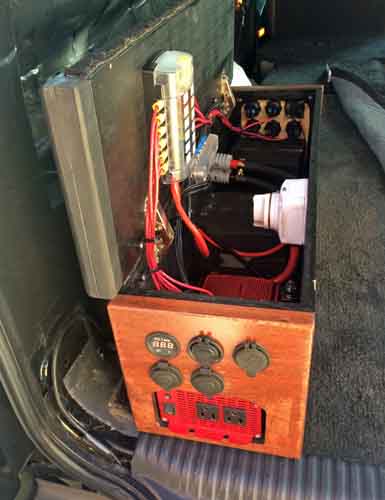PNWadventures
New member
I am looking to run power to the back of my truck and figured you all will have some helpful advice. I would like to mount something like this, https://www.amazon.com/gp/product/B0741C4F78, in the back of the truck by the tailgate. I would like to wire it in parallel to the switch so I can turn off the unit when not in use. After some research it appears that I should use a 15A fuse. Is this correct? I would like to be able to use both USBs and charge a laptop off the 12v outlet.
For the wiring... I was thinking of using 10-12 gauge cable for the run from the battery to the tailgate. I narrowed it down to this gauge after consulting this website, http://www.offroaders.com/technical/12-volt-wiring-tech-gauge-to-amps/. I am not sure which gauge to use to connect the individual units together.
So, the questions I have are:
1) What gauge wire should I use to run the ~10-15 feet from the battery to tailgate area?
2) What size and where should the fuse be placed? By the battery or in the back by the panel?
4) What gauge wire should be used to connect the individual units together?
5) Should I install a fuse block in the back then connect the panel unit to that? In case I have additional accessories I would like to add in the future. Such as lighting.
Thank you!
For the wiring... I was thinking of using 10-12 gauge cable for the run from the battery to the tailgate. I narrowed it down to this gauge after consulting this website, http://www.offroaders.com/technical/12-volt-wiring-tech-gauge-to-amps/. I am not sure which gauge to use to connect the individual units together.
So, the questions I have are:
1) What gauge wire should I use to run the ~10-15 feet from the battery to tailgate area?
2) What size and where should the fuse be placed? By the battery or in the back by the panel?
4) What gauge wire should be used to connect the individual units together?
5) Should I install a fuse block in the back then connect the panel unit to that? In case I have additional accessories I would like to add in the future. Such as lighting.
Thank you!

